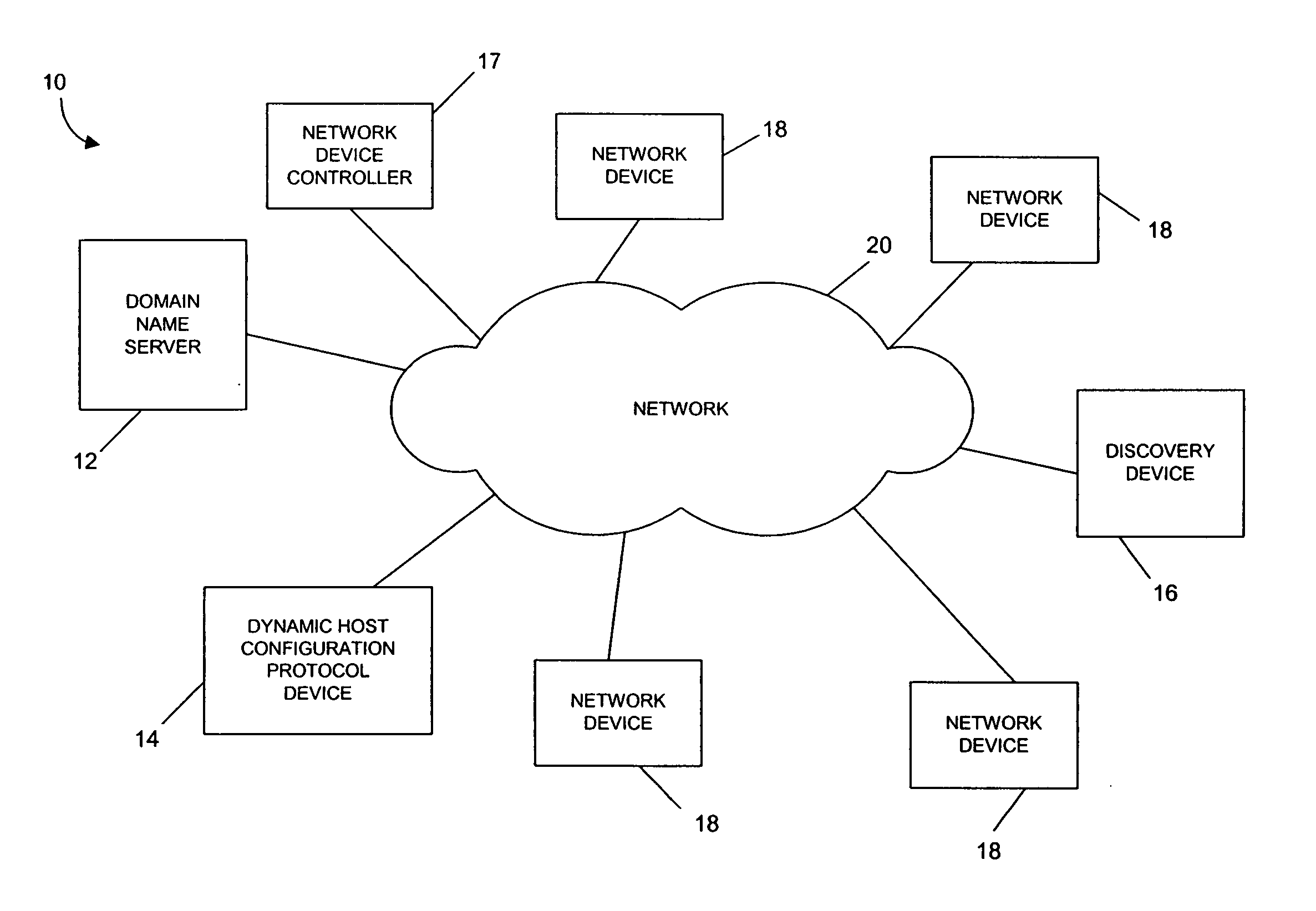Methods and systems for discovering and configuring network devices
a network device and network configuration technology, applied in the field of network device discovery and configuration methods and systems, can solve the problems of limiting the ability of system administrators to manage and reconfigure the network, devices may not operate correctly or at all, and so as to simplify the operation of the network device, increase pre-installation planning and installation costs, and increase knowledge and training
- Summary
- Abstract
- Description
- Claims
- Application Information
AI Technical Summary
Benefits of technology
Problems solved by technology
Method used
Image
Examples
Embodiment Construction
[0017]FIG. 1 illustrates an exemplary system 10 for networking a number of devices. The system 10 includes a domain name server (“DNS”) 12, a dynamic host configuration protocol (“DHCP”) server 14, a discovery device 16, a network device controller 17, one or more network devices 18, and a network 20 connecting the components. The DNS 12 functions as an IP address directory and provides IP addresses of devices connected to the network 20 so that information can be addressed and routed to the appropriate destination. Devices connected to the network 20 can query the DNS 12 for the IP addresses of other devices also connected to the network 20.
[0018] The DHCP device 14 dynamically assigns IP addresses to devices that are connected to the network 20. The DHCP device 14 may issue permanent or temporary addresses to connected devices from a pool of available addresses. Issued addresses may be associated with a time duration that specifies an amount of time or uses that the address will ...
PUM
 Login to View More
Login to View More Abstract
Description
Claims
Application Information
 Login to View More
Login to View More - R&D
- Intellectual Property
- Life Sciences
- Materials
- Tech Scout
- Unparalleled Data Quality
- Higher Quality Content
- 60% Fewer Hallucinations
Browse by: Latest US Patents, China's latest patents, Technical Efficacy Thesaurus, Application Domain, Technology Topic, Popular Technical Reports.
© 2025 PatSnap. All rights reserved.Legal|Privacy policy|Modern Slavery Act Transparency Statement|Sitemap|About US| Contact US: help@patsnap.com



